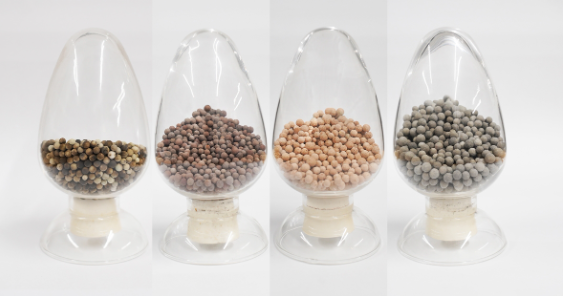Selection Guide of Ozone Catalysts
Ozone catalyst is a special catalytic material which can effectively stimulate the degradation. As a special catalytic material, ozone catalyst can effectively promote the decomposition of ozone and transform it into other substances. It is widely used in various fields such as air purification, exhaust gas treatment, water treatment, and organic synthesis. In the scenario of air purification, the ozone catalyst realizes the efficient removal of harmful gases and odorous substances. In the field of wastewater treatment, it not only catalyzes ozone to directly oxidize organic matter in water into carbon dioxide and water, but also breaks down large organic molecules into smaller ones, thereby significantly enhancing the biodegradability of pollutants.
The mechanism of this catalyst primarily involves the active sites on the catalyst surface facilitating the decomposition of ozone into oxygen molecules and hydroxyl radicals. These reactive species then participate in chemical reactions, ultimately converting harmful substances into harmless one.
In practice, evaluating the performance of ozone catalysts and completing the selection process is crucial. The performance evaluation system for ozone catalysts primarily covers core indicators such as activity, selectivity, stability and poison resistance. These indicators can be comprehensively assessed through a combination of laboratory testing and industrial application validation.
When selecting ozone catalysts, considerations should be based on the application objectives:
1. For ozone elimination scenarios: The appropriate type of catalyst should be selected according to the ozone concentration (low, medium, or high), and the catalyst configuration should be determined in combination with specific operating conditions.
2. For ozone utilization scenarios: Catalyst screening should be conducted based on the composition of the exhaust gas or wastewater as well as operational parameters.

SINOKLE's Ozone Catalyst Series
Following key dimensions should be highly considered:
1. The feature of high specific surface area:
A Substrate with high affinity and adsorption capacity should be selected as the ozone catalyst based on the pollutant composition in the wastewater. When wastewater comes into contact with the catalyst, organic pollutants preferentially accumulate on its surface. The subsequently introduced ozone the achieves efficient mass transfer and oxidation reactions on the catalyst surface. Due to this enrichment effect of organic matter, degradation becomes faster and more thorough, significantly enhancing the removal rate of chemical oxygen demand (COD).
2. Uniform Distribution of Active components:
Some ozone catalysts on the market only have activated material loaded on the surface. Therefore, products with efficient catalytic activated components uniformly distributed both internally and externally should be selected. A uniform distribution of active components can reduce the activation energy required for the oxidative decomposition of organic compounds, facilitating the easier breakdown of ozone molecules under the catalyst’s action to generate highly oxidative free radicals. This significantly enhances the oxidation capacity, reaction rate, and conversion efficiency of ozone, while reducing residual ozone levels in the exhaust gas.
3. High-Temperature Sintering Stability:
High-quality ozone catalysts should utilize multiple efficient metal oxides and elemental substances as catalytic materials, combined with three-dimensional framework technology to increase the number of micropores and optimize their distribution uniformity under high-temperature conditions. Such catalysts are characterized by resistance to powder detachment and long service life, while also possessing higher specific surface area and active surfaces, thereby maximizing the oxidation efficiency of ozone.
Taking the heterogeneous ozone catalyst developed by SINOKLE Technology as an example, this product utilizes multiple transition metal oxides and precious metals as catalytic components. Through catalyst loading technology and segmented precise temperature-controlled sintering processes, it reduces the loss rate of active components while ensuring catalytic activity and high strength. Its special micropore molding technology achieves a high specific surface area, resulting in excellent catalyst loading performance and significantly enhanced catalytic reaction rates and efficiency. The super-hydrophilicity of the catalyst carrier makes it resistant to contamination, scaling, and clogging issues. The oxidation efficiency is improved by 2-5 times compared to traditional ozone catalytic oxidation technologies, demonstrating excellent adaptability and catalytic activity. Currently, this technology has been widely applied in COD removal across various fields, including coal chemical wastewater, refining and petrochemical wastewater, and landfill leachate treatment, achieving remarkable treatment results.
